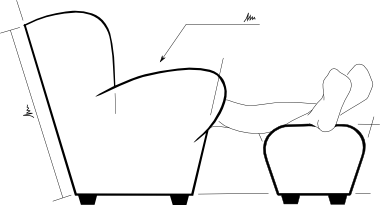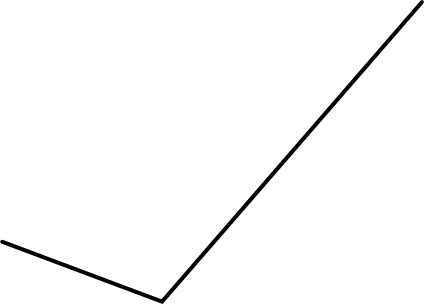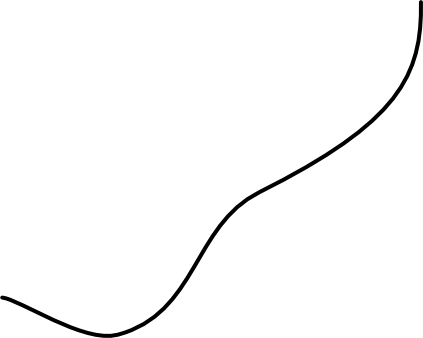Seat Shape
This post is a bit of a development of design ideas. Sometimes it’s good to go through each stage of a design and explain why it has been rejected.
Of course, like any design process there’s a good deal of opinion, approximation and guesswork to it, so be sure to add a comment below if you see something I’ve missed, or you disagree with me.
Flat
The simplest seat is just a flat surface to sit on. This is fine for an upright bike but for a recumbent seating position, the lack of a back rest means it would be uncomfortable to use for more than a few minutes.
Straight Backed
Adding a back allows the rider to lean back comfortably whilst cycling and gives support for them to push against while pedalling. Though this is good for an upright seat, as the seat back becomes increasingly reclined there’s an ever increasing likelihood that the action of pedalling will push the rider up the seat-back. And the more the rider moves about in the seat, the less secure they will feel.
Here’s an example of a straight-backed slung-seat for an upright seated recumbent.
Ideal
The best seat shape would be one that fitted the rider exactly. That’s only possible if the seat is made to fit the rider, but a perfectly fitting hard-shell wouldn’t even need padding. The front of the seat comes up slightly to stop submarining (when the occupants hips slip forward off the seat) the middle of the back gives comfortable lumbar support and the top of the seat curves around the occupant’s shoulders to stop them from riding up while pedalling.
3-Part
With three flat sections, the it’s possible to better approximate the ideal shape than with two, and the middle section could be curved upwards to give more lumbar support. If the seat surface is fabric that is held in tension across the profile, then adjustment of the tension at different points of the profile could give a good approximation to the ideal shape. Adjustment should be kept to a minimum through, as complexity is the enemy of lightness.
The three-part seat seems to be a typical choice for reclined seating positions. Here’s an example where the upper-most part extends to include a headrest.
Long Back
Adjusting the three-part seat from equally sized sections with 30/31 degree angles might make a more fitting seat shape. With a reclined seating position where the rider’s legs will be normally moving means only a small seat base is required. A recumbent rider is less likely to slip forwards on the seat as pedalling will keep them pushed back into the seat. As such, a short, inclined seat base is sufficient.
The angle of the seat back is slightly more open at 35 degrees from the seat base. And the length of the seat back keeps all riders seated with a flat back. The short shoulder rest at the top, at 90 degrees to the seat base, will sit at/just above the rider’s shoulders, so they don’t ride up whilst pedalling hard. No headrest is used.
I’ve just found that the recent images of the Mosquito Zero show a long-back three-part seat (second image) as described above.





